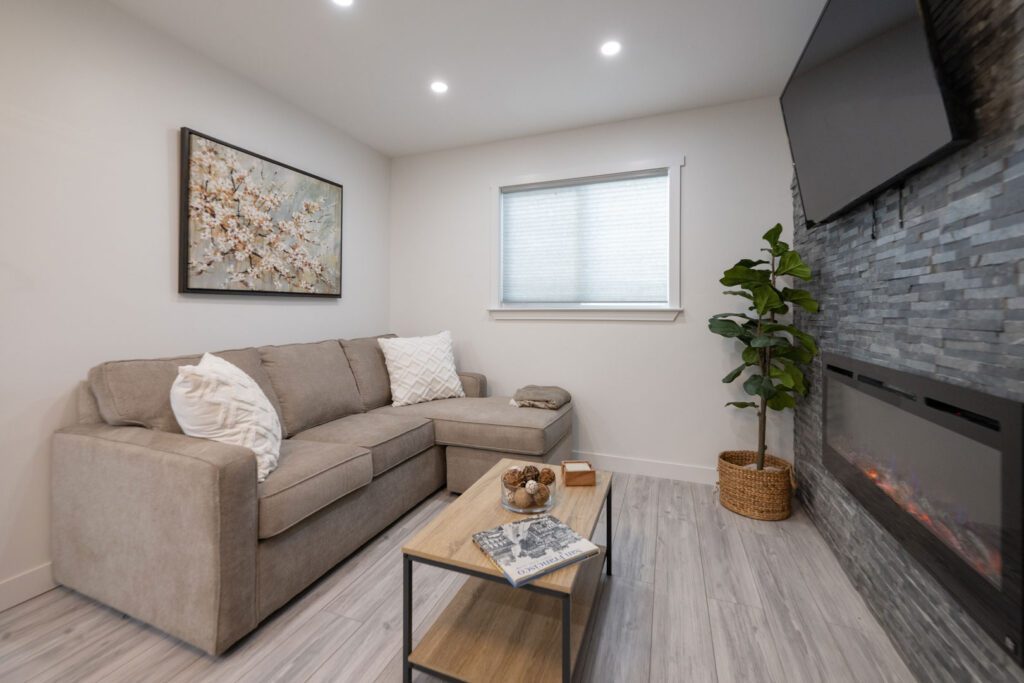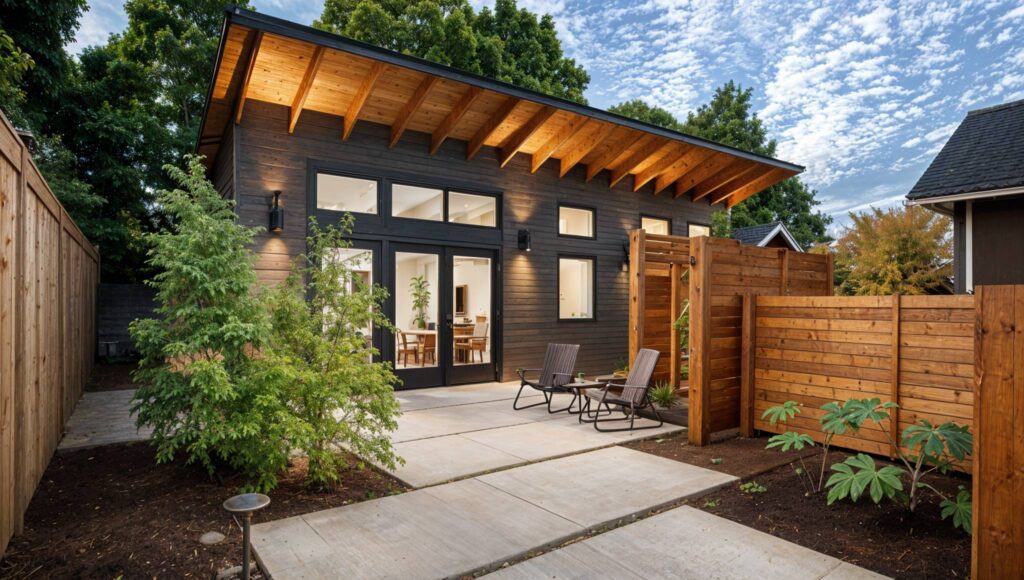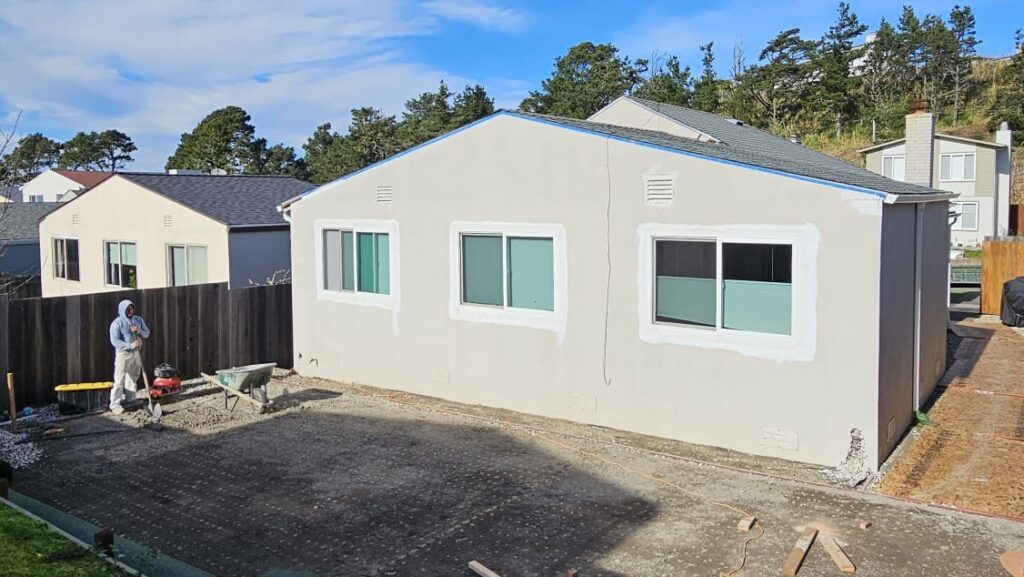Thinking of constructing an ADU for a home office? Avoid these common blunders that could derail your project. From overlooking zoning regulations to underestimating costs, we’ve got you covered with the top five mistakes to steer clear of. By learning from others’ missteps, you can save time, money, and headaches during your ADU construction journey. Stay ahead of the game and ensure a smooth process by sidestepping these pitfalls.
1. Skipping Local Zoning and Permit Regulations
Understanding Zoning Laws
Local zoning laws dictate where and how you can build an ADU. Failure to comply can result in fines or even demolition.
Zoning regulations typically cover aspects such as size limits, parking requirements, and usage restrictions. Before starting your project, ensure that your ADU plans align with these regulations.
Importance of Obtaining Permits
Obtaining permits is crucial when constructing an ADU. Permits ensure that your structure meets safety standards and local codes.
Without the necessary permits, you risk facing legal consequences. It’s essential to go through the proper channels to avoid any issues down the line.
Risks of Non-Compliance
Non-compliance with zoning laws and permit requirements can lead to serious consequences. Fines and penalties may be imposed for violations.
Moreover, if your ADU does not meet regulatory standards, you may be forced to dismantle the structure entirely. This can result in significant financial losses and wasted time.
2. Poor Space Planning
Overlooking Functionality
One common mistake in building an ADU for a home office is overlooking functionality. People often focus more on aesthetics than the practicality of the space. For instance, placing the desk near a window might seem appealing, but if it results in excessive glare on the computer screen, it hampers productivity.
Ignoring Storage Needs
Another crucial aspect of poor space planning is ignoring storage needs. While creating a home office, people tend to underestimate the amount of storage required. Without adequate storage solutions like shelves, cabinets, or drawers, the workspace can quickly become cluttered and disorganized.
Disregarding Electrical Outlets Placement
Disregarding the placement of electrical outlets is also a significant mistake in space planning. Insufficient outlets or poorly positioned ones can lead to messy extension cords across the room, posing safety hazards and hindering the workflow. It’s essential to strategically plan outlet locations for efficient use of electronic devices.
Lack of Proper Lighting Consideration
Neglecting proper lighting consideration can impact the functionality and ambiance of a home office. Insufficient lighting can strain the eyes and affect productivity, while overly bright lights can cause glare issues. A well-lit workspace with a mix of natural and artificial light sources is crucial for a comfortable and productive environment.
Inadequate Ventilation Planning
Inadequate ventilation planning is often overlooked when designing a home office within an ADU. Poor ventilation can lead to stuffiness, discomfort, and decreased air quality, affecting overall well-being and work efficiency. Proper airflow through windows, vents, or fans is essential for a healthy workspace.
3. Inadequate Insulation and Ventilation
Lack of Proper Insulation
Improper insulation in an ADU can lead to energy inefficiency, causing higher utility bills. Without adequate insulation, the space may become too cold in winter and too hot in summer. This can result in discomfort for those using the ADU as a home office.
Importance of Ventilation
Ventilation is crucial for maintaining good indoor air quality. Inadequate ventilation can lead to stale air and humidity build-up, creating an uncomfortable environment for working. Proper ventilation ensures fresh air circulation, which is essential for productivity and well-being.
Risks of Mold and Mildew
Insufficient ventilation can also result in mold and mildew growth within the ADU. These not only pose health risks but also cause damage to the structure over time. To avoid such issues, it’s important to have proper ventilation systems in place.
Impact on Work Productivity
Poor insulation and ventilation can significantly impact your work productivity. Extreme temperatures due to inadequate insulation can make it challenging to focus and concentrate on tasks. Moreover, poor ventilation can lead to stuffiness and discomfort, further hindering your ability to work efficiently.
Solutions for Better Insulation and Ventilation
- Ensure proper insulation materials are used during construction.
- Install energy-efficient windows to prevent heat loss or gain.
- Consider incorporating a mechanical ventilation system to improve air circulation.
- Use ventilation fans in areas prone to moisture buildup, such as bathrooms or kitchens.
4. Ignoring the Long-Term Use Potential
Lack of Future-Proofing
One common mistake when building an ADU for a home office is ignoring the long-term use potential. Homeowners often focus on immediate needs rather than considering how the space will adapt to future requirements. This oversight can lead to costly renovations down the line.
Limited Flexibility
By failing to prioritize long-term use, homeowners risk creating a space that lacks flexibility. For instance, designing a home office without considering potential changes in work dynamics or technology advancements can result in a workspace that quickly becomes outdated. It’s essential to design with adaptability in mind.
Inadequate Space Planning
Another mistake related to long-term use potential is inadequate space planning. Overlooking the need for sufficient storage, natural light, or room layout optimization can impact the functionality and comfort of the home office over time. Effective space planning is crucial for maximizing usability.
Neglecting Technology Integration
Ignoring the integration of technology infrastructure during construction is a critical error when setting up a home office ADU. Failing to plan for power outlets, internet connectivity, or cable management can hinder productivity and limit the functionality of the workspace. Proper technology integration is essential for a modern home office setup.
Forgetting about Ergonomics
Ergonomics play a vital role in ensuring long-term comfort and productivity in a home office setting. Neglecting factors such as proper desk height, chair ergonomics, and lighting can lead to health issues and decreased efficiency over time. Prioritizing ergonomics is key for a sustainable work environment.
5. Underestimating Utility Needs
Lack of Proper Planning
Many individuals fall into the trap of underestimating their utility needs when building an ADU for a home office. They fail to plan adequately for essential utilities such as electricity, water, and internet connectivity. This oversight can lead to significant challenges once the ADU is in use.
Consequences of Inadequate Utility Provisioning
Without sufficient planning, homeowners may face disruptions in their work due to power outages or unreliable internet connections. These disruptions can hamper productivity and create unnecessary stress. It is crucial to assess the utility requirements of a home office ADU thoroughly.
Importance of Professional Consultation
To avoid underestimating utility needs, seeking professional advice is paramount. Consulting with electricians, plumbers, and IT specialists can provide valuable insights into the specific requirements of a home office setup. Their expertise can help homeowners make informed decisions and prevent costly mistakes.
Benefits of Detailed Assessment
Conducting a detailed assessment of utility needs ensures that the ADU is equipped to support a functional and efficient workspace. By accurately estimating electricity consumption, water usage, and internet bandwidth requirements, homeowners can create a conducive environment for remote work without interruptions.
Key Considerations for Utility Planning
- Evaluate the power requirements for lighting, electronics, and climate control systems.
- Ensure adequate water supply for restroom facilities and kitchen amenities.
- Plan for reliable internet connectivity to support video conferences and online work tasks.
Final Remarks
In avoiding these common mistakes when building an ADU for your home office, you ensure a smoother process and a more functional workspace. By adhering to local regulations, planning your space wisely, prioritizing insulation and ventilation, considering long-term use, and estimating utility needs accurately, you set the stage for a successful project. Remember, attention to detail now saves you time and money in the future.
Before you dive into constructing your ADU for a home office, take the time to address these crucial aspects. Your diligence will pay off in the form of a comfortable, efficient workspace that enhances both your productivity and well-being.
Frequently Asked Questions
1. What are the consequences of skipping local zoning and permit regulations?
By skipping local zoning and permits, you risk facing fines, having to dismantle your ADU, or being unable to use it as intended. It’s crucial to comply with regulations to avoid legal issues and ensure safety.
2. How can poor space planning affect the functionality of an ADU?
Poor space planning can result in cramped or inefficient layouts that hinder productivity. By carefully designing the space, you can maximize usability, comfort, and aesthetics to create a conducive environment for a home office.
3. Why is inadequate insulation and ventilation a critical mistake when building an ADU?
Inadequate insulation and ventilation can lead to discomfort, high energy bills, and potential health hazards. Proper insulation regulates temperature, while good ventilation ensures fresh air circulation, creating a healthy and energy-efficient workspace.
4. What are the risks of ignoring the long-term use potential of an ADU?
Ignoring long-term use potential may result in outgrowing the space or needing costly renovations sooner. Considering future needs allows for flexibility and adaptability, ensuring that your ADU remains functional and valuable over time.
5. How does underestimating utility needs impact the usability of an ADU?
Underestimating utility needs can lead to insufficient power outlets, lighting, or internet connectivity, limiting functionality. By accurately assessing your requirements upfront, you can ensure that your home office ADU is equipped to support your work demands efficiently.
Elevate Your Home with Red White & Blue Construction!
Thinking about framing solutions for your house? Look no further! Embark on a transformative journey where your home in Lafayette, CA, becomes the sanctuary you’ve always dreamed of. With Red White & Blue Construction, every wall and corner is meticulously framed to ensure your house is as structurally sound as it is beautiful. Dive into advanced framing techniques that provide the perfect foundation for your home, or explore innovative designs that maximize space and enhance functionality. Our reputation in the Bay Area stands as a testament to our commitment, expertise, and the unparalleled standards we uphold. We’re more than just licensed contractors; we’re the architects of your dream home. With our transparent pricing and exceptional client engagement, you’re not just building; you’re reimagining, redefining, and revitalizing your space. Choose Red White & Blue Construction. Craft the next chapter of your home story. Frame Your Home with Excellence and reach out to us today!
Disclaimer
The materials available on this website are for informational and entertainment purposes only and not to provide advice. You should obtain advice concerning any particular issue or problem from a professional. You should not act or refrain from acting based on any content included in this site without seeking legal or other professional advice. The information presented on this website may not reflect the most current building developments. No action should be taken in reliance on the information on this website. We disclaim all liability concerning actions taken or not taken based on any or all of the contents of this site to the fullest extent permitted by law.





